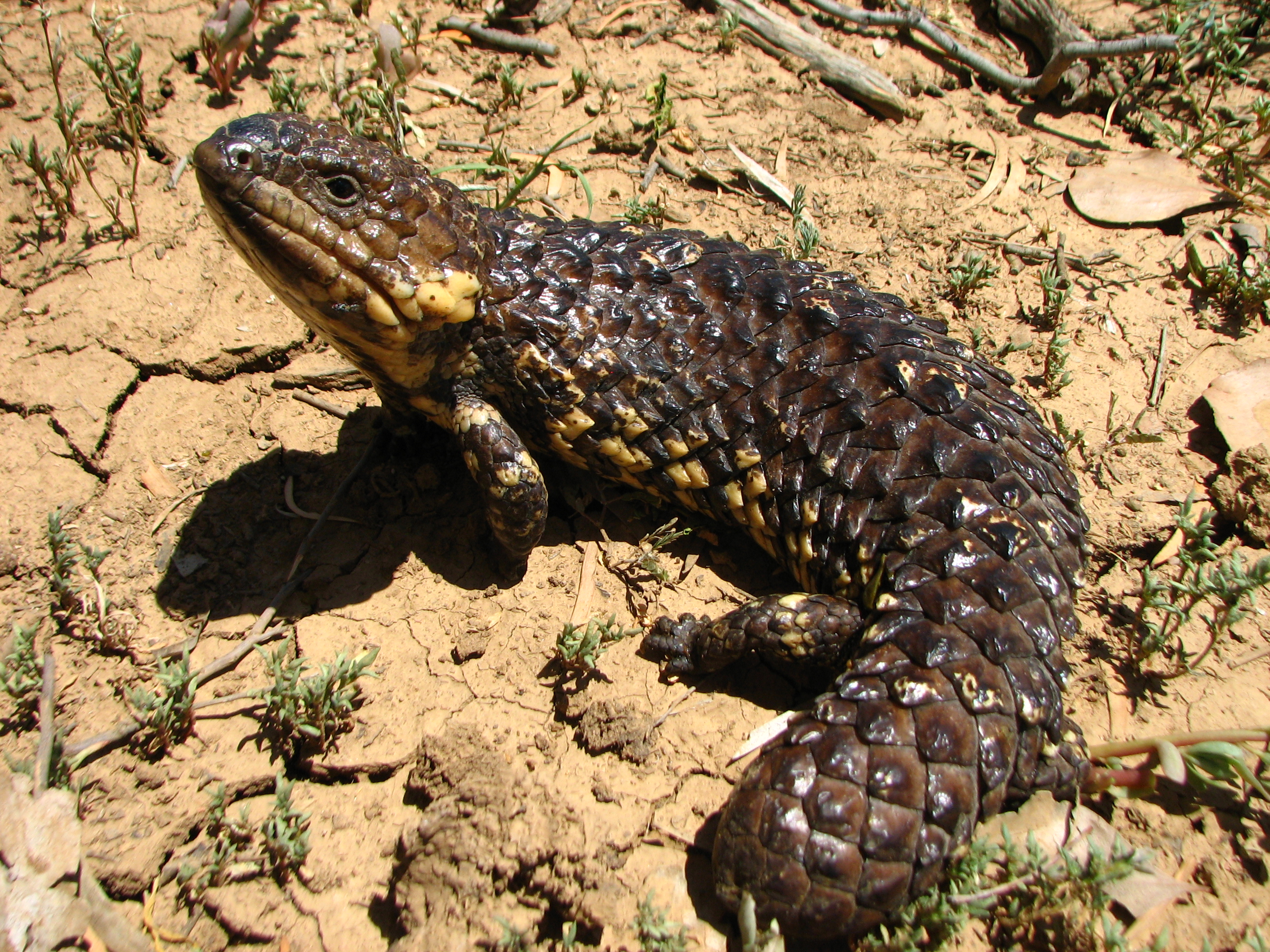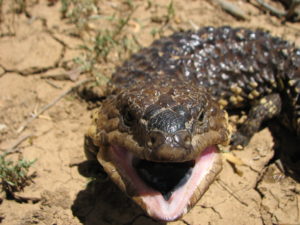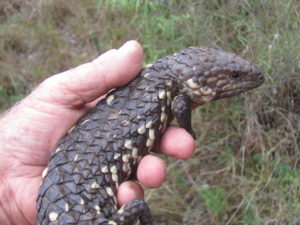
What are Shinglebacks?
- Shinglebacks are a skink, which is a type of lizard.
- At 40 cm long and up to 900 grams, they’re one of the largest skinks in the world.
What do they look like?
- They’re similar to their cousins; the Blue-tongued Lizard, because they have a blue tongue.
- But Shinglebacks are heavily armoured with large pinecone-like scales and a stumpy tail.
- Hence they’re often called Stumpy-tails, Bobtails, Pinecone Lizards or Sleepy Lizards.
Are they common, where will people see them?
- Yes, they’re relatively common west of the Dividing Range, but during winter they remain dormant so people wouldn’t have seen much of them over the last few months.
- As the weather warms up, they’ll be coming out to warm themselves up, and get ready for the breeding season.
- That’s when you’ll often find them crossing the road, or just lying on the road sunning themselves.
- There’s a very good chance you’ll see them on any of BOOBOOK’s EcoTours, as they’re very common in the Maranoa Region.
Tell me more about their breeding season?
- The breeding season last from September through till November.
- For most of the year they are solitary animals but during the breeding season they’re monogamous; they will search out the same partner every year for their entire lives (and they can live for over 20 years).
- After mating, the females are pregnant for about 3 months, so they usually give birth between December and April.
Do they lay eggs?
- No, unlike most lizards they give birth to live young, often twins.
- When the babies are born they’re already half as long as the mum and weigh up to 200 grams each.

- After birth the babies eat the placenta that comes out with them, and within a few days they disperse and look after themselves for the rest of their lives.
What do they normally eat?
- They’re omnivorous; which means they eat a bit of everything.
- They eat insects, snails, flowers, fruit, berries, vegetation, carrion (dead animals) and even kangaroo and emu faeces.
- I’ve also heard of them raiding people’s gardens and eating strawberries and tomatoes.
- Their stumpy tail stores fat which the lizard lives on during winter.

